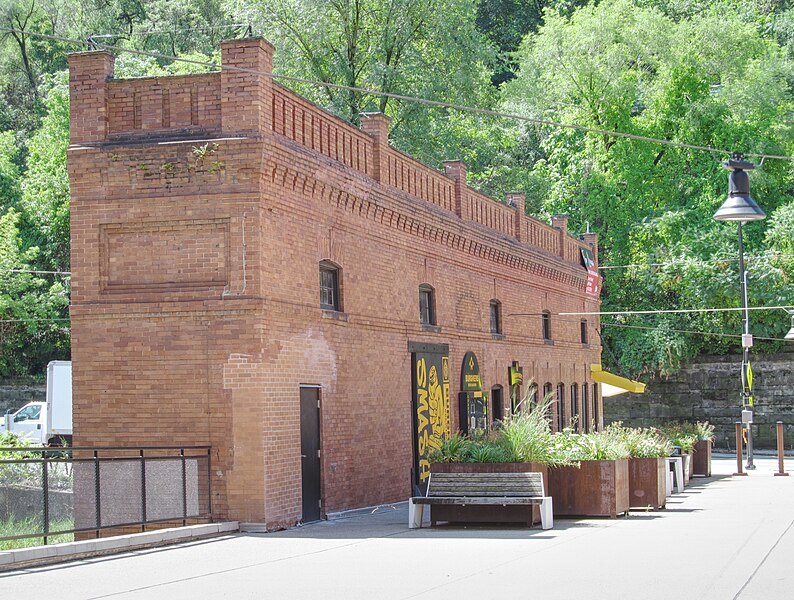
Now called “The Highline,” the Pittsburgh Terminal Warehouse and Transfer Company was one of the largest commercial buildings in the world when it was finished in 1906. The architect was the prolific Charles Bickel, who gave us a very respectable version of Romanesque-classical commercial architecture on a huge scale.
The building was planned in 1898, but it took several years of wrangling and special legislation to clear three city blocks and rearrange the streets to accommodate the enormous structure. Its most distinctive feature is a street, Terminal Way, that runs right down the middle of the building at the third-floor level: as you can see above, it has now been remade into a pleasant outdoor pedestrian space. You can’t tell from the picture above, but there is more building underneath the street.

The bridge coming out across the railroad tracks is the continuation of Terminal Way, which comes right to the edge of the Monongahela, where the power plant for the complex was built.
The reason for the complex is more obvious from this angle. Railroad cars came right into the building on the lowest level to unload.

It also had access to the river, and road access to Carson Street at the other end. Every form of transportation came together here for exchange and distribution.

McKean Street separates the main part of the complex from the Carson Street side; Terminal Way passes over it on a bridge.

The Fourth Street side shows us the full height of the building. Fourth Street itself is still Belgian block.

A view over the McKean Street bridge and down Terminal Way from the Carson Street end.

This absurdly narrow building is on the Carson Street side of the complex; it has usually housed a small restaurant of some sort. One suspects that this was the result of some kind of political wrangling that ended in a ridiculously small space on this side of Terminal Way between Carson and McKean Streets.

The power plant for the complex, seen above from the Terminal Way bridge across the railroad. It could use some taking care of right now.


This view of the complex from the hill above Carson Street was published in 1911 as an advertisement for cork from the Armstrong Cork Company.

Leave a Reply